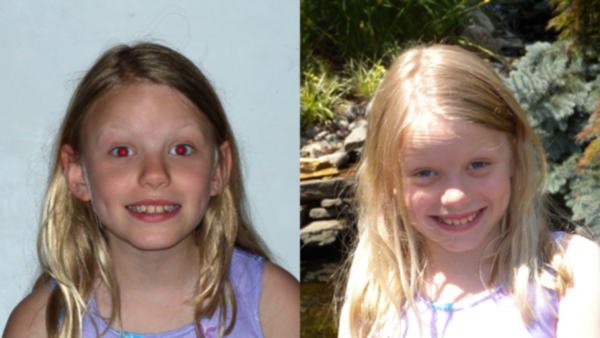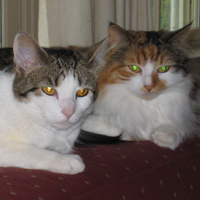Why Do People Get Red-Eye in Photographs?
One reason is that they are looking at the camera! What this does is make an image of the camera in focus on the person's retina (back of the eye). That also means that the back of the eye is in focus at the camera and all the light from the back of the eyes goes right into the camera lens to make a bright (and blurred) image of the person's retina.
Since the retina is covered with blood vessels, the most dominant reflected color is red. It is the brightly reflected image of these blood vessels that we see as red-eye in the photograph. While such an image is always there, it becomes much more apparent under certain circumstances. These are when the flash is near the camera lens (which happens with most small cameras) and the person's pupils are wide open (which happens when it is dark and flashes are most commonly used). The combination of the flash and the wide open pupils makes for a particularly bright red-eye image.
The red-eye effect can be minimized by having some other light on the subject so that their pupils close down (some cameras do this with an extra flash before the photograph is taken), by having them look slightly away from the camera, by separating the flash from the camera lens, and by moving a little closer to effectively make the distance between lens and flash a bit larger.
![]()
Explore the NEXT TOPIC at this level.
Explore the NEXT LEVEL on this topic.
Ever wonder ... What is a camera?
Updated: Dec. 31, 2010

